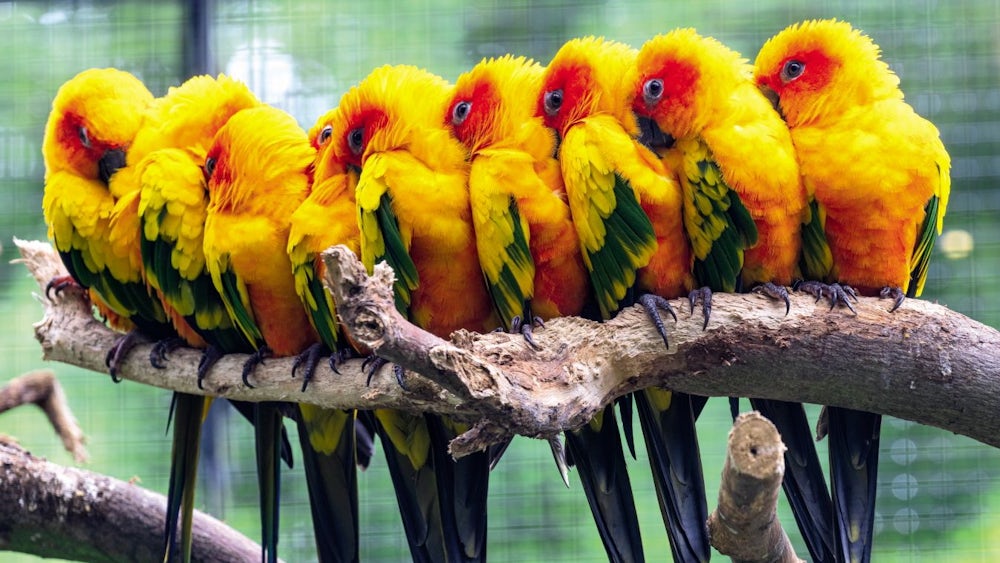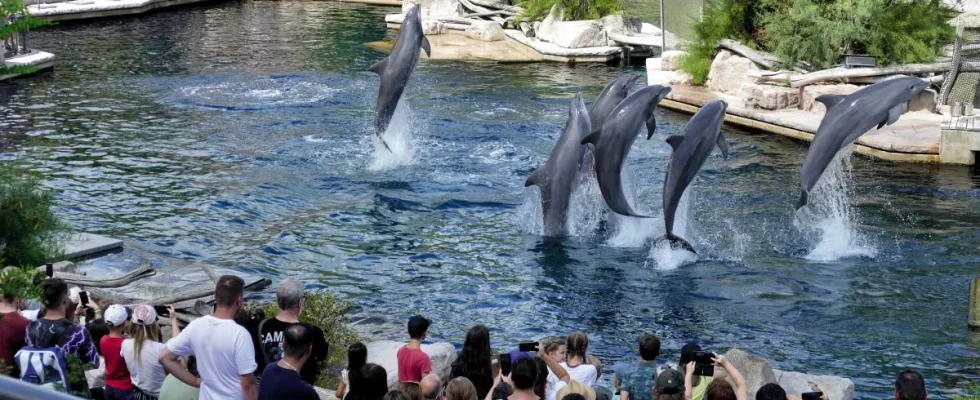The reintroduction of bearded vultures in the Berchtesgaden National Park is one of the most spectacular nature conservation projects in Bavaria. Of course, this is mainly due to the impressive bearded vultures themselves, which, with a wingspan of up to three meters, are among the most powerful birds of prey in the world. But the project is also special because a large number of high-profile partners are cooperating under the leadership of the State Association for Bird Protection (LBV). One is the Nuremberg Zoo. “Without zoos like the Nuremberg Zoo, our bearded vulture project would not be possible at all,” says LBV boss Norbert Schäffer. “Zoos are extremely important for nature conservation, even if most people don’t know that.”
Hans Helmreich, journalist and long-time editorial director at Bayerischer Rundfunk, definitely shares Schäffer’s assessment. “Modern zoos are no longer just exhibitions of exotic animals with attached playgrounds,” he writes in his book “Zoos in Bavaria – Recreation, Knowledge, Species Protection”, which was recently published by Allitera Verlag and describes the five scientifically managed zoos Hof, Nuremberg, Straubing, Augsburg and Munich are portrayed. “Incorporated into a global network, they are building a gene pool for more and more endangered animal species and ensuring their survival. The focus is no longer on animals alone, but on the diverse connections of life, biodiversity.” Helmreich therefore calls zoos “nature conservation centers”.
Of course, the thesis is likely to offend some animal lovers, from whose point of view elephants, lions, zebras, polar bears, dolphins and all the other exotic and native animals can only lead a dignified life in the wild and never in a zoo. But it is true, as the conservationist Schäffer and the author Helmreich say. And not just because the vast majority of zoos have converted their formerly narrow animal houses and cages into spacious enclosures and facilities. But because their work makes them more and more necessary for the wildlife out in nature, which has mostly shrunk to residual habitats.
None of the 20 to 25 young bearded vultures that the LBV will settle in the Berchtesgaden National Park over the course of ten years will hatch from the egg in the wild. All will come from zoos in Europe, more specifically from the European Bearded Vulture Breeding Program (EEP) of the European Association of Zoos and Aquaria (EAZA). The Nuremberg Zoo with its bearded vultures is part of the EEP, zoo deputy boss Jörg Beckmann very much hopes that a young bearded vulture from Nuremberg can one day be released into the wild in the Berchtesgaden National Park.

In addition, the Nuremberg Zoo was the first port of call for the six young bearded vultures from Spain or another breeding station in Europe that have been settled in the Berchtesgaden National Park. In Nuremberg they were allowed to recover from the hardships of their journey to Bavaria, were examined by a veterinarian and prepared for the adventure of being released into the wild. Incidentally, the bearded vulture project is only one of a total of 40 EEPs in which Nuremberg Zoo is involved. Of course, the zoos in Hof, Straubing, Augsburg and Munich also work on all sorts of species protection initiatives – for the Malagasy spikefish (Hof), for example, the Bali starling (Straubing), the Rothschild giraffes (Augsburg) or the northern bald ibis (Munich). .
When it comes to imparting knowledge, Bavarian zoos have long since moved beyond simply displaying their animals and providing more or less detailed descriptions on information boards on the enclosures or in some brochures. Today, zoo educators organize tours for school classes and adults, give lectures, manage collections and much more. Michaela Gauderer is a zoo educator in Straubing. The zoo there was the first in Bavaria to set up its own zoo school. That was in 1986. Helmreich dedicated a detailed portrait to Gauderer. Just as he also lets zoo directors, animal keepers, curators, representatives of friends and support associations have their say in his book.

Helmreich’s book can of course also simply be used as a guide for excursions. It contains all the information you need, addresses, information about playgrounds and baby changing facilities, festivals, restaurants and the like. Because as much as the zoos in Bavaria have changed in terms of demands and facilities, they have remained one thing: places to experience. “I have experienced several times how children asked their parents when visiting the zoo: Is this really real?” writes Helmreich. “The chance to meet ‘real’ animals has become as rare as it is valuable.”
Hans Helmreich: Zoos in Bavaria – recreation, knowledge, species protection, Allitera Verlag, 2024, 205 pages, 25 euros

